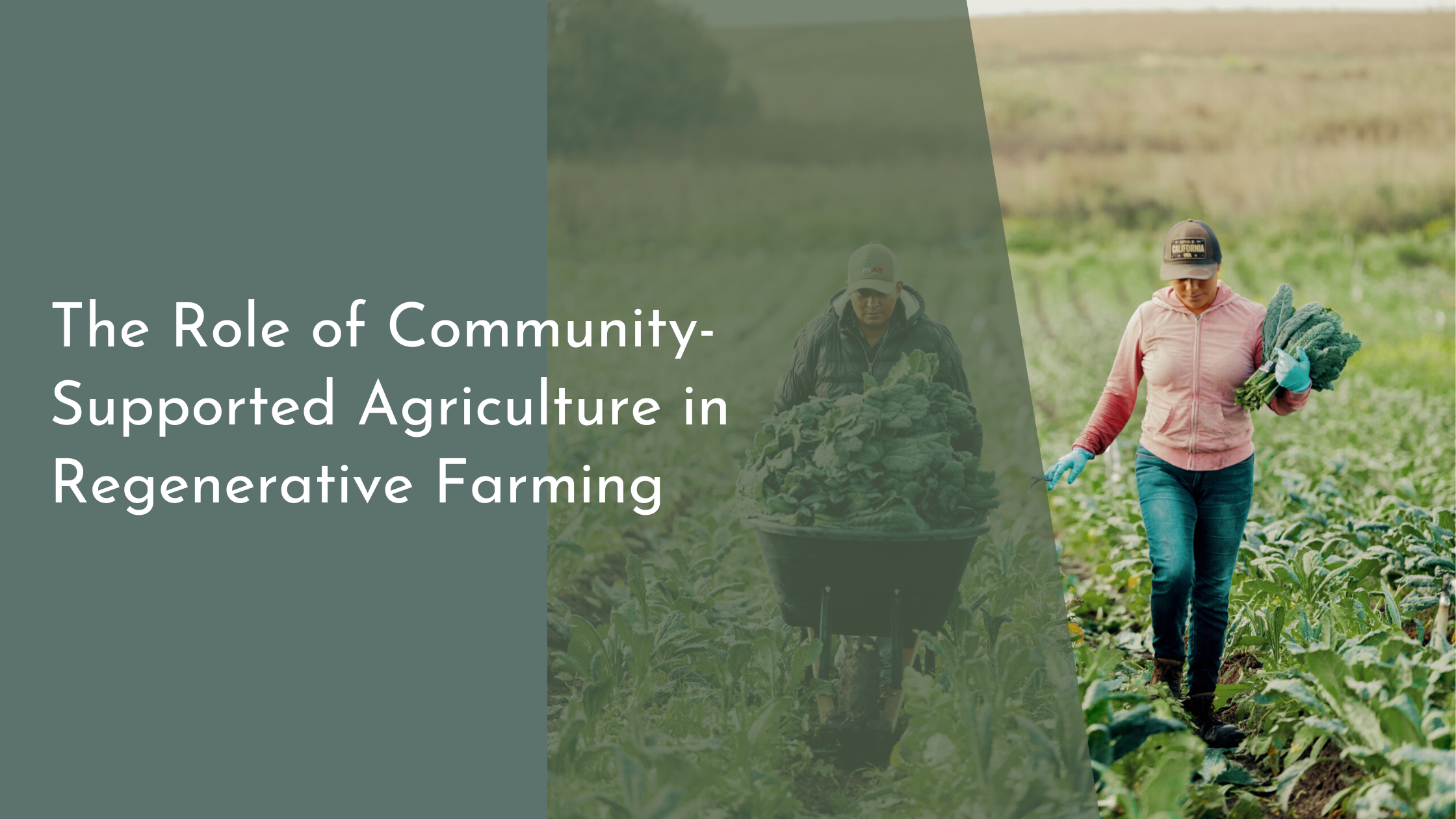The Role of Community-Supported Agriculture in Regenerative Farming
In recent years, the concepts of sustainability and environmental stewardship have gained substantial attention in the agricultural world. Amidst this evolving landscape, Community-Supported Agriculture (CSA) has emerged as a vital mechanism that not only connects consumers with their food sources but also supports regenerative farming practices. By fostering a direct relationship between farmers and the community, CSA plays a significant role in nurturing soil health, enhancing biodiversity, and promoting sustainable agricultural methods. This article explores the integral role of CSA in the context of regenerative farming, highlighting its benefits and potential for positive environmental impact.
Understanding Community-Supported Agriculture
Community-Supported Agriculture (CSA) is a farming model that bridges the gap between consumers and farmers by creating a system of mutual support. In a CSA arrangement, community members purchase shares or subscriptions at the beginning of the growing season, providing farmers with upfront capital to cover production costs. In return, these subscribers receive fresh, seasonal produce throughout the farming season, often including a diverse array of fruits, vegetables, and other farm products. This model not only ensures a steady market for farmers but also brings consumers closer to the source of their food, fostering a deeper appreciation for the farming process and the local food ecosystem.
One of the hallmarks of CSA is its emphasis on community and collaboration. By participating in a CSA, consumers are actively supporting local farmers and contributing to the resilience of regional food systems. This communal aspect of CSA encourages transparency and trust, as consumers gain insight into the challenges and triumphs of farming through direct interactions with the farmers. Additionally, CSA initiatives often host farm visits, workshops, and community events that further strengthen the bond between producers and consumers, creating a sense of shared responsibility for sustainable food production and land stewardship.
Principles of Regenerative Farming Practices
Regenerative farming is a holistic approach to agriculture that seeks to restore and enhance ecosystems through sustainable land management practices. At its core, regenerative agriculture focuses on improving soil health, increasing biodiversity, and sequestering carbon to mitigate climate change. Key principles include minimal soil disturbance, cover cropping, crop rotation, agroforestry, and integrated livestock management. These practices aim to regenerate the land, enhance ecosystem services, and create resilient agricultural systems that can adapt to changing environmental conditions.
The regenerative farming approach is rooted in ecological awareness and sustainability. It recognizes that healthy soils are the foundation of productive and sustainable agriculture, and thus, emphasizes the importance of nurturing soil biology and structure. By promoting biodiversity both above and below ground, regenerative agriculture fosters resilient ecosystems that can better withstand pests, diseases, and environmental stresses. These practices not only improve farm productivity and profitability but also contribute to broader environmental benefits, such as carbon sequestration and water conservation, making regenerative farming a key player in efforts to address global environmental challenges.
How CSA Enhances Soil Health and Biodiversity
CSA initiatives are uniquely positioned to support regenerative farming practices that enhance soil health and biodiversity. Through their direct connection with consumers, CSA farmers are often more empowered to implement diverse cropping systems and innovative soil management techniques that prioritize long-term ecological well-being over short-term yields. This flexibility allows CSA farms to adopt regenerative practices such as cover cropping and reduced tillage, which improve soil organic matter, enhance soil structure, and increase water retention capabilities.
Moreover, CSA farms often cultivate a wide variety of crops, contributing to greater biodiversity on the farm. This diversity is not only beneficial for soil health but also supports a myriad of plant and animal species, creating a thriving ecosystem. By avoiding monoculture practices and incorporating a range of plant species, CSA farms provide habitats for pollinators and beneficial insects, which are crucial for maintaining ecological balance and promoting natural pest control. This biodiversity synergy enhances the resilience of the farm ecosystem, making it more robust against pests and changing climate conditions, while also enriching the nutritional value of the produce offered to CSA members.
Harvesting the Benefits of CSA in Regenerative Farms
The synergy between CSA and regenerative farming offers numerous benefits for both farmers and consumers. For farmers, CSA provides financial stability through upfront payments from members, allowing them to invest in regenerative practices without the immediate pressure of market fluctuations. This financial model enables farmers to prioritize sustainable practices that enhance soil health and farm resilience, ultimately leading to increased productivity and reduced dependency on chemical inputs.
From the consumer perspective, participating in a CSA provides access to fresh, locally grown produce that is often more nutrient-dense and flavorful than conventionally sourced foods. Consumers gain the satisfaction of knowing that their food choices directly support sustainable farming practices that safeguard the environment for future generations. Additionally, CSA members often enjoy a sense of community and connection with the land, as they become part of a movement that values transparency, environmental stewardship, and mutual support. This relationship fosters a deeper understanding and appreciation of the food system, encouraging more sustainable consumption habits beyond the CSA model.
Community-Supported Agriculture stands as a shining example of how local communities can play a pivotal role in promoting sustainable and regenerative farming practices. By fostering a direct and supportive relationship between consumers and farmers, CSA not only enhances soil health and biodiversity but also builds resilient agricultural systems that benefit both the environment and the people who rely on it. As awareness of the importance of sustainable food systems continues to grow, CSA offers a hopeful pathway toward a more regenerative and interconnected future for agriculture.

